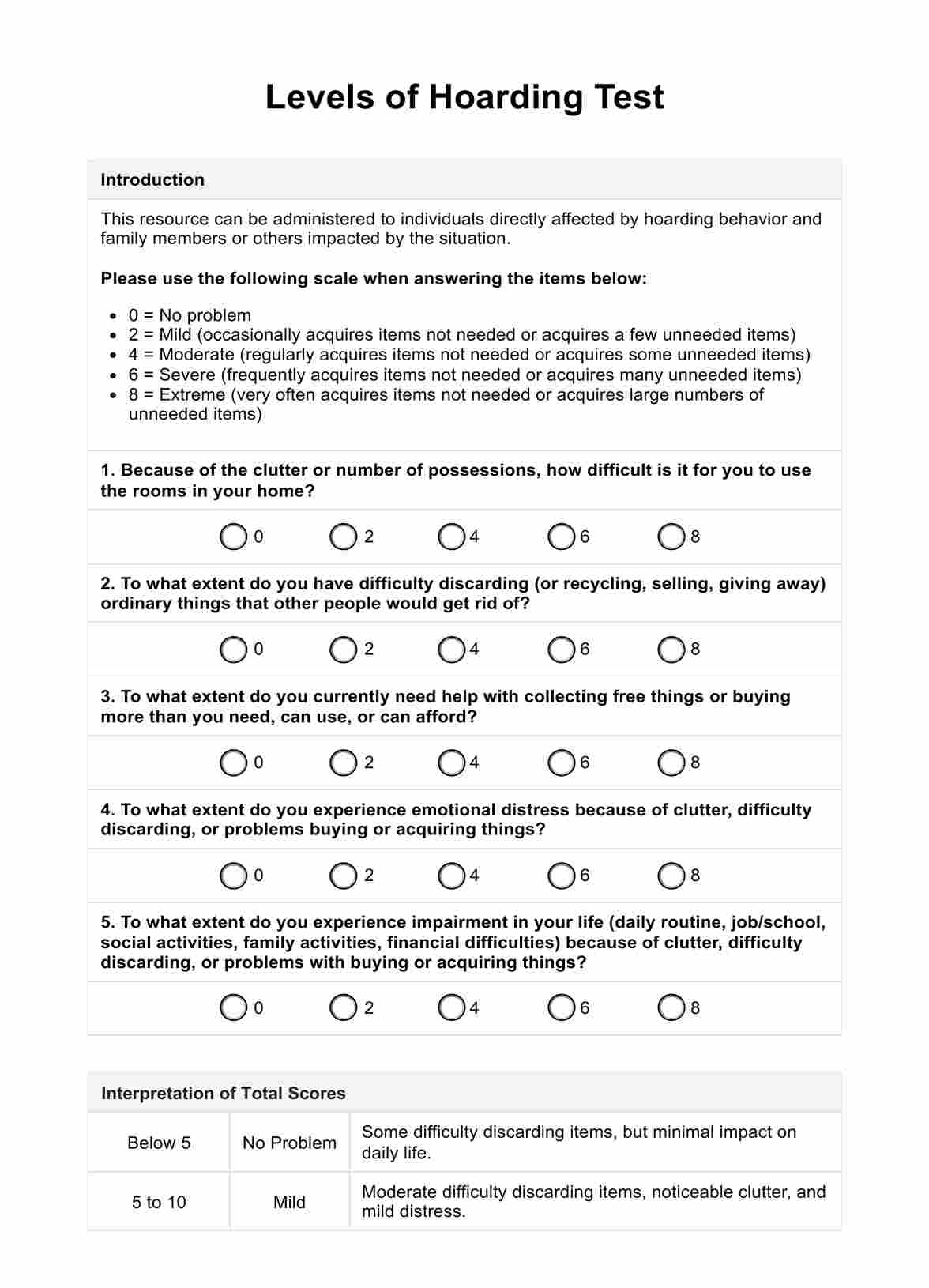While collecting or saving items may involve acquiring and organizing specific items of interest, hoarding disorder involves an excessive accumulation of possessions, often resulting in clutter that compromises living spaces and creates distress or impairment in daily life.

Levels of Hoarding Test
Access a resource that will aid you in evaluating a patient's hoarding disorder. Download our Levels of Hoarding Test today!
Levels of Hoarding Test Template
Commonly asked questions
The symptoms of hoarding disorder include difficulty discarding items, excessive clutter in living spaces, feelings of distress or anxiety when attempting to discard possessions, indecisiveness about what to keep or toss, and impairment in functioning due to clutter.
Yes, hoarding disorder can be treated, typically through therapy, medication, and support from mental health professionals. Cognitive-behavioral therapy (CBT) and drugs such as selective serotonin reuptake inhibitors (SSRIs) may be effective in treating hoarding disorder.
EHR and practice management software
Get started for free
*No credit card required
Free
$0/usd
Unlimited clients
Telehealth
1GB of storage
Client portal text
Automated billing and online payments











